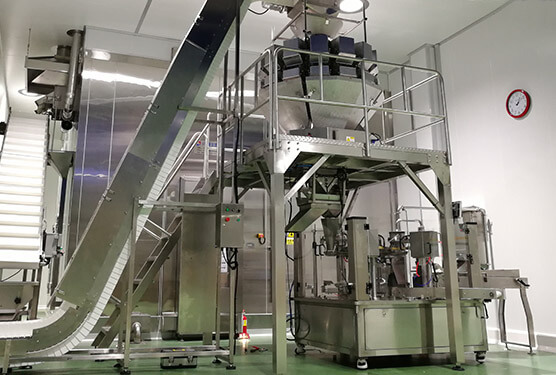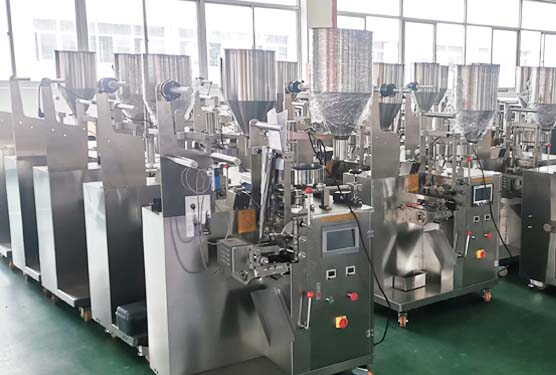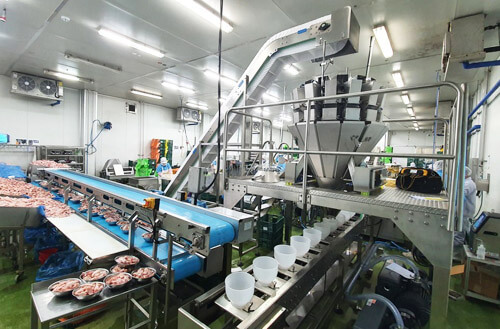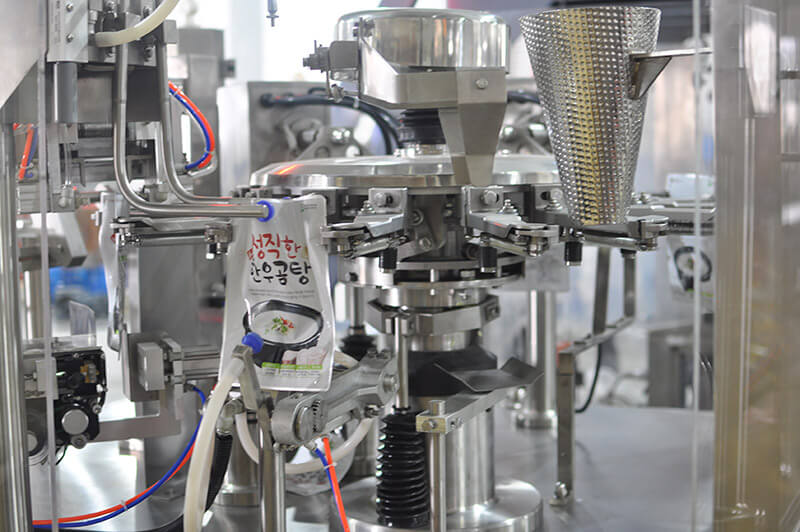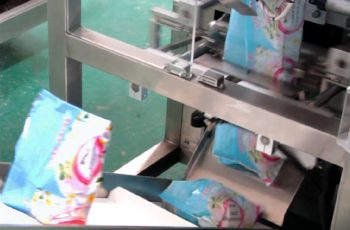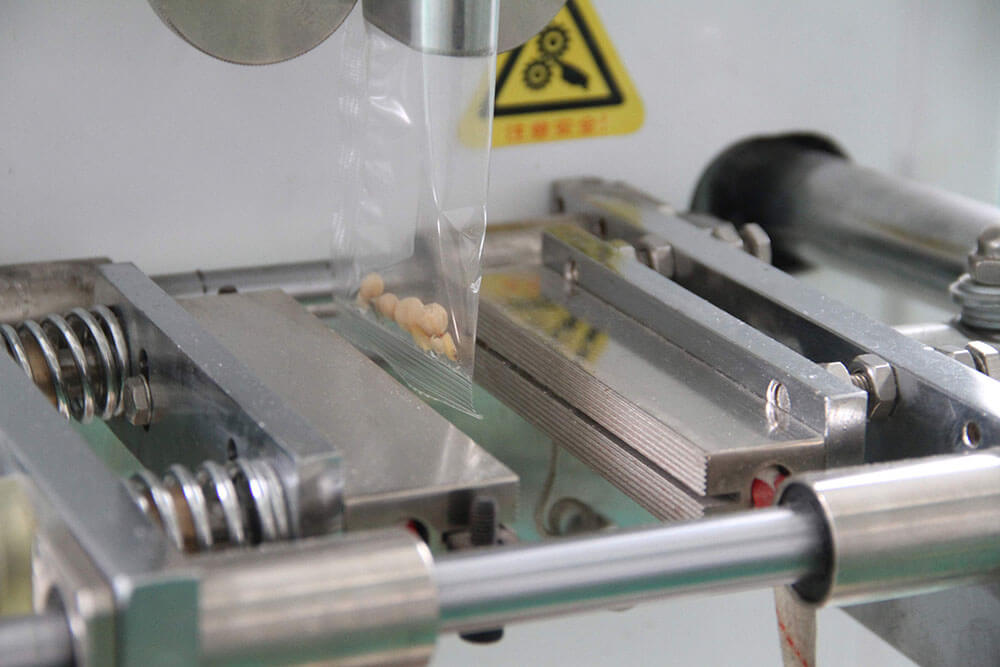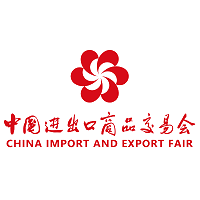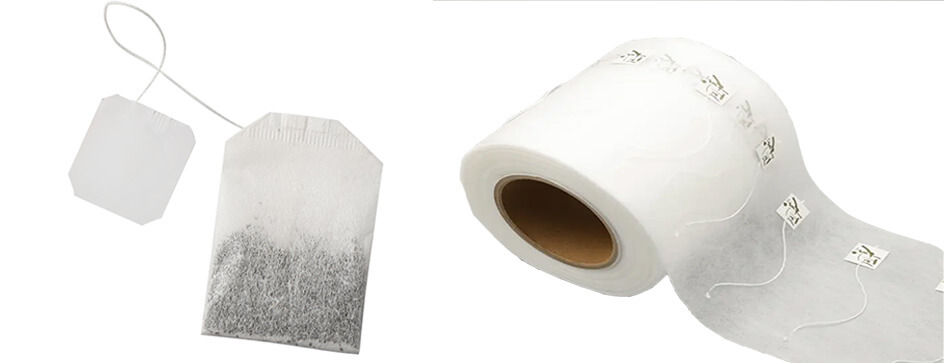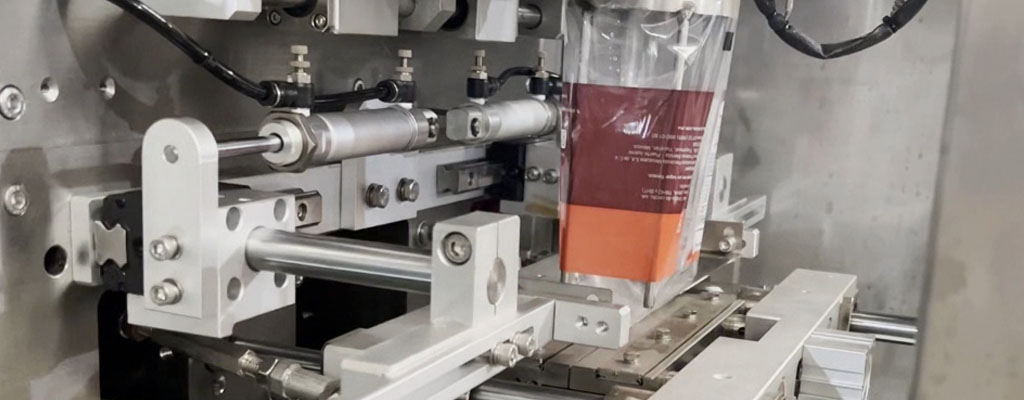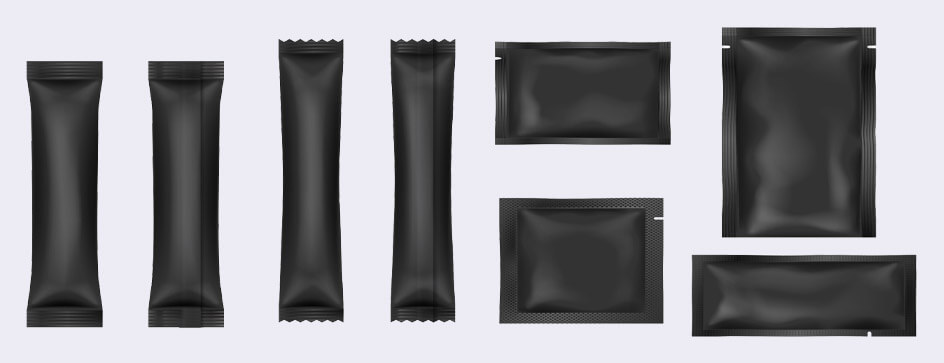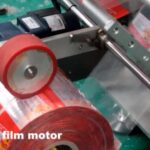Searching for the ideal material for your tea bag packaging option? Then, this article is for you; keep reading.
There are many tea bag packaging materials available in the market. However, each one comes with different advantages and drawbacks. So, you have to choose the type that matches your product, budget, etc.
In this article, I have covered every single detail of tea bag material and its unique features. Let’s take a look at them-
What Is Tea Bag Packaging?
Tea bag packaging is used to enclose tea leaves in a way that preserves freshness and flavor against oxygen and moisture. So the tea can be qulaityful for months. This way, the businesses pack and sell tea. Many materials are used for making tea bags, like nylon, silk, paper, and more.
Top 12 Tea Bag Materials
Many different types of tea packaging materials are available in the market. I have mentioned here some popular materials used for tea bags widely. Let’s see them-
- Paper
Paper is the most traditional material for tea bags. It is made from wood or vegetable fibers and is biodegradable.
| Pros | Cons |
| Cost-effective Keep the taste quality the same Simple to print information | It can easily tear up Not best for loose-leaf |
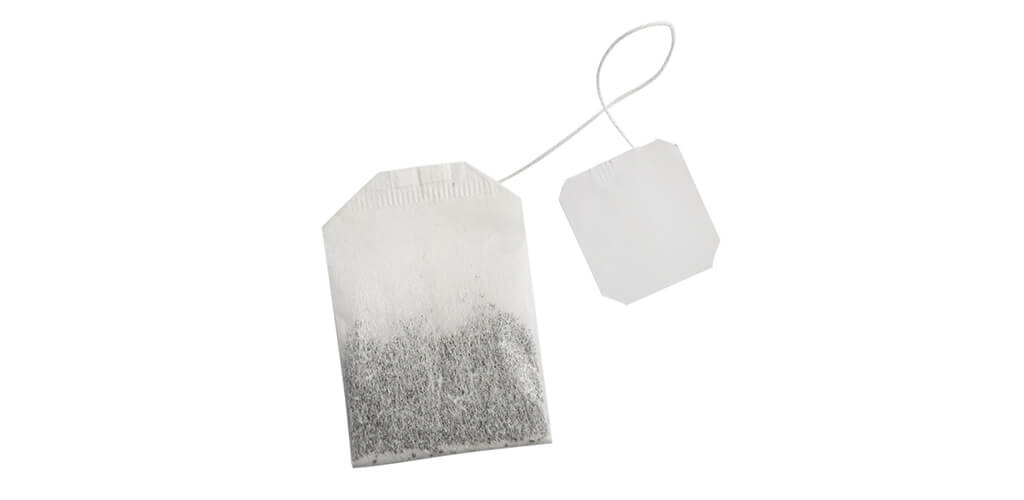
- Silk
The silk tea bag offers a luxurious, high-end presentation. The fine mesh allows water to flow freely, enhancing flavor infusion. It is used for premium teas but is not biodegradable. Although silk material adds elegance, this is more costly compared to other materials like paper or nylon.
| Pros | Cons |
| Flexible Durable Come in different shapes | Expensive Not eco friendly |

- Nylon
Nylon is a versatile material, particularly used in green tea bags. It is heat resistant and maintains temperature to preserve tea quality. However, nylon can affect the tea taste as it comes in direct contact with the tea leaves.
| Pros | Cons |
| Strong, not easily tear up Prevents excessive heat | Not compostable |

- Soilon
If you are worried about increasing environmental pollution, use soil material for your tea bags. It is one of the most biodegradable, plant-based materials made with corn starch. Therefore, soilon bags decompose naturally. Actually, this material is the same as nylon in strength and transparency without harming nature.
| Pros | Cons |
| Compostable Heat resistantEco-friendly packaging | Expensive Need to store carefully |
- Non-Woven Fabrics
Non-woven fabric is used widely in tea bags. Typically, it is bonded together by chemicals, solvents, and heat. It keeps tea leaves fresh by resisting moisture. Also, this fabric is breathable and does not release harmful substances when brewed.
| Pros | Cons |
| Strong Non-toxicFlexible | Not so eco-friendly |

- Cotton
The cotton tea bag is famous for its natural and biodegradable material. However, it is less common due to high costs and less durable than other options.
| Pros | Cons |
| Safe material Reusable | High price |
- Muslin
Usually, a muslin tea bag is made from loosely woven cotton material. It is commonly well-known for its breathability and reusability features.
| Pros | Cons |
| Suitable for loose-leaf teas Offer the best brewNatural material | Not much available Costly |
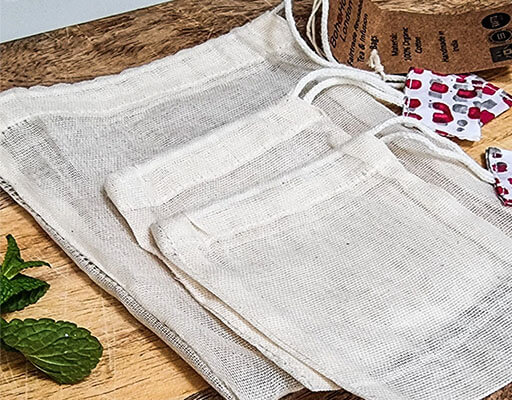
- Polypropylene
Polypropylene is a plastic polymer conventionally used in tea bags to seal and maintain their shape in hot liquid. However, it releases nanoplastics and microplastics into the tea, which can harm health.
| Pros | Cons |
| Cheap Heat sealed | Raise health risk |
- Hemp
It is made from natural, chemical-free hemp fibers. It is reusable and resistant to mildew and UV light. Meanwhile, hemp is a sustainable alternative to traditional plastic tea bags.
| Pros | Cons |
| Do not harm the environment | Expensive Do not have heat resistance |
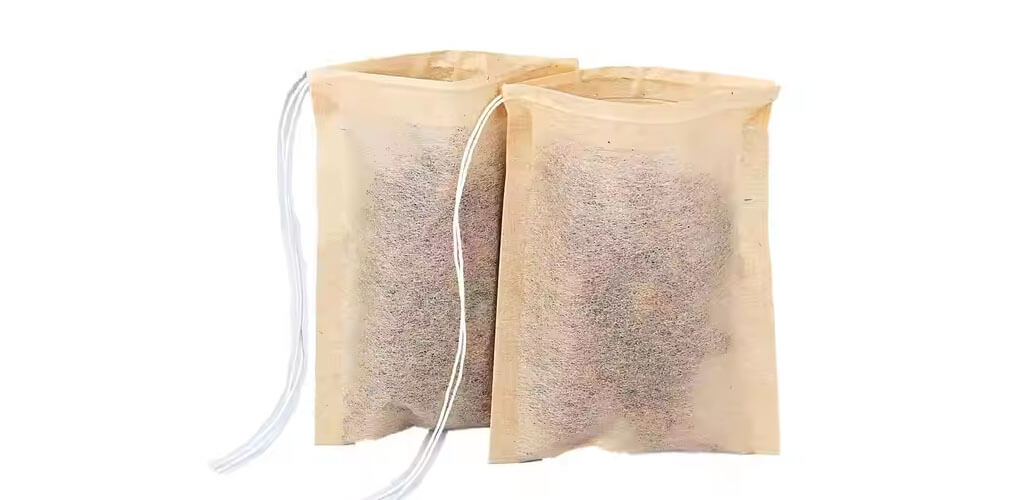
- PLA (Polylactic Acid)
This is made from plant-based material like corn starch, which is non-toxic and compostable. It is widely used for tea bags due to its eco-friendly properties. This packaging comes in different shapes, such as pyramid and rectangular.
| Pros | Cons |
| Prevent moisture Stong | Limited shelf life |
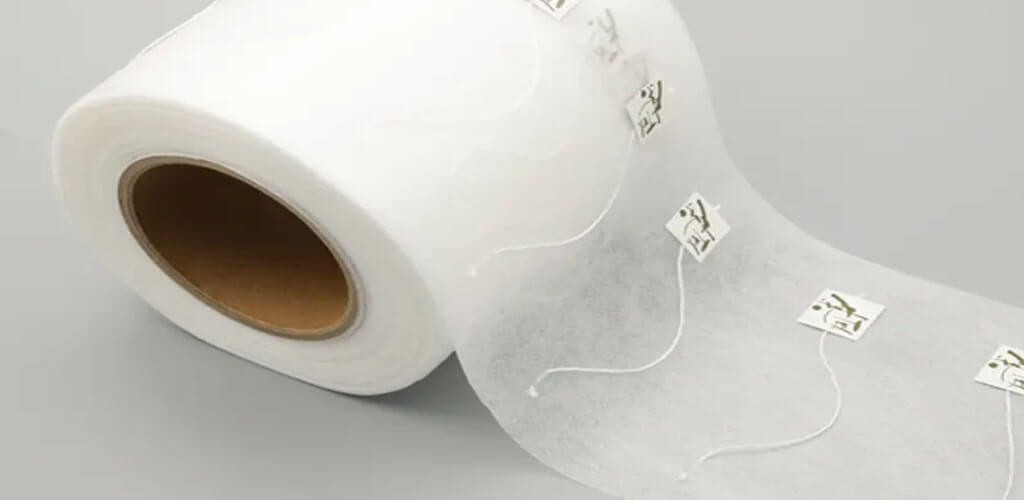
- Aluminum
Aluminum is not typically used as a material for tea bags. However, it is mainly used in tea packaging in the form of foil or laminates to offer a barrier against oxygen. This way, it maintains the freshness of the tea.
| Pros | Cons |
| Lightweight Durable | Not transparent |
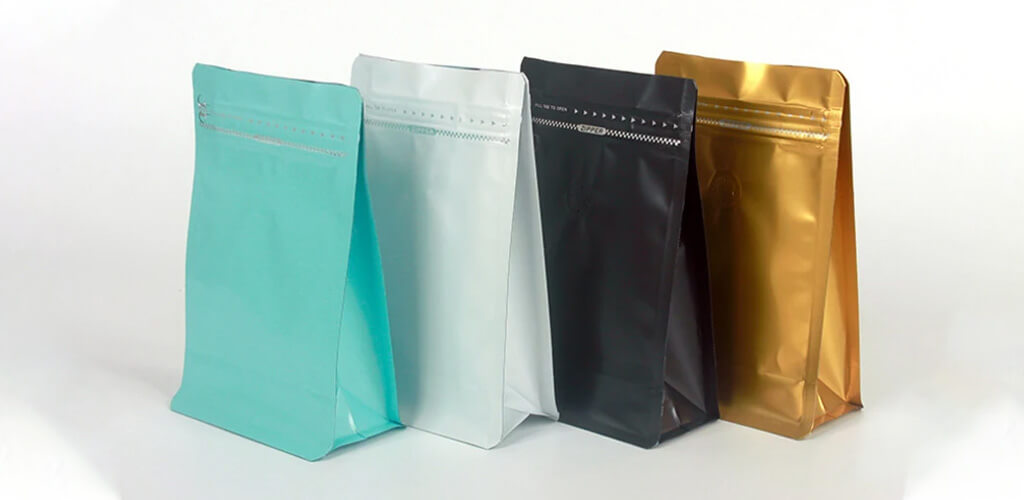
- Tinplate
A tinplate is a steel sheet coated with tin, which can provide significant barrier support. This packaging ensures the long shelf life of tea. Also, it is eco-friendly and helps to reduce environmental pollution.
| Pros | Cons |
| Great protection Reusable Premium look | Limited customize option |
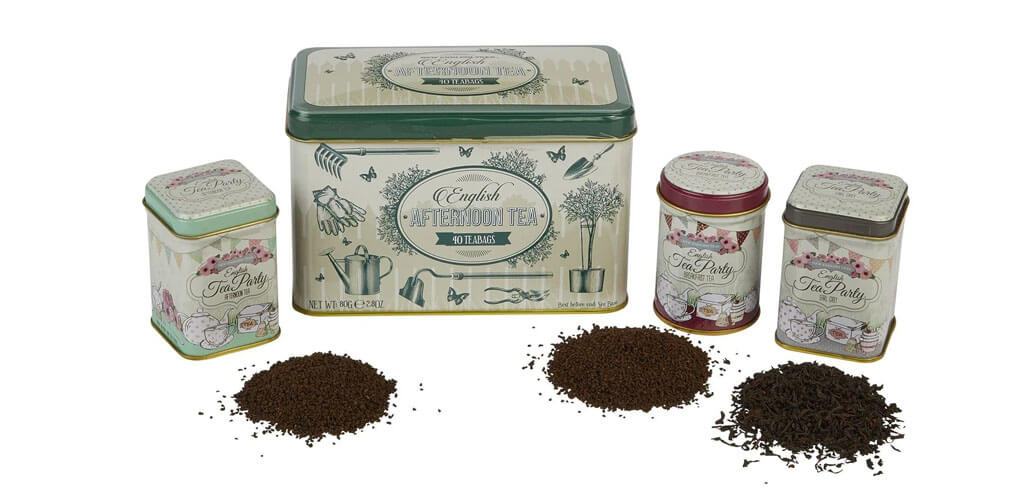
A Chart Comparison Of The Tea Packaging Materials
| Material | Heat-Sealable | Impact on flavour | Biodegradable |
| Paper | Yes | Minimal | Yes |
| Silk | No | Minimal | Yes |
| Nylon | Yes | Potential leaching | No |
| Soilon | Yes | Minimal | Yes |
| PLA | Yes | Minimal | Yes |
| Non-woven Fabric | Yes | Minimal | Varies |
| Aluminum | Yes | Potential metallic taste | No |
| Tinplate | Yes | Potential metallic taste | No |
How Do You Choose Best Tea Packaging Materials?
- Type of tea: While choosing tea packaging materials, you should consider the tea type of your factory. The materials will be different based on the different teas, like powdered tea and loose-leaf tea. For instance, green tea requires more airtight packaging to keep the tea fresh.
- Protection from light: Light sensitivity can cause the tea to lose its flavor and aroma, so you need to select light-protective materials. Tin cans, aluminum foil, and dim or dark packaging are the best options. These materials will shield the products from light exposure.
- Moisture barriers: Choose packaging materials for tea bags with the best moisture barrier properties to keep the tea fresh. Materials like glass jars, aluminum foil, and specific plastic with tight-fitting caps are ideal. This way, you can save tea from fungal.
- Aroma preservation: As the aroma is the main thing for tea, use packaging that seals well and retains the tea’s scent. Therefore, by using foil or multilayer pouches, you can preserve the aroma for a long time.
- Shelf life: Laminated aluminum foil, tin cans, and vacuum-sealed pouches are ideal as they prevent oxidation. They then extend the shelf life of the tea. These materials have excellent barrier properties against light and moisture.
- Brand image: Attractive designs, vibrant colors, and unique shapes can make your product stand out. So, choose visually appealing packaging that reflects your brand’s values to capture consumer attention.
How To Store Tea To Keep It Fresh?
- First of all, store tea in a cool, stable environment, ideally below 25°C (77°F), away from heat sources like sunlight or machinery.
- Avoid exposure to light, especially UV rays, which can degrade tea quickly. So, you can use opaque containers and store tea in dark areas.
- Store tea away from strong odors, as tea can absorb odors easily. Keep tea away from areas near spice cabinets, trashcans, or other aromatic sources.
How To Package Tea For Sale And Why It Is Essential In Marketing?
Custom-friendly tea packaging design: You should package tea with user convenience in mind. For instance, you can choose an easy-to-open tea packaging option.
Easy to carry and use: From stand-up to zipper-lock and resealable packaging, select one that is easy to carry and use.
Be creative with packaging: It is necessary to make your packaging stand out from your competitors. For this, you can customize many designs and create packaging with unique shapes.
Provide clear and specific tea packaging information: When customers find all the information about the ingredients, they can decide whether or not to buy it.
In line with eco-friendly packaging trends: By being concerned about enhancing environmental pollution, select eco-friendly packaging. It will positively increase your brand image.
Protection: The packaging is necessary for selling the tea leaves. This way, the tea remains safe during storage and transportation.
Conclusion
The selection of tea bag packaging materials is essential to ensure the quality of tea. Therefore, when choosing materials, consider the barrier level and environmentally friendly features. Also, if you have specific requirements, go with materials that are customizable and strong.
If you have any tea packaging needs, contact Honorpack for professional packaging services.
FAQs
What is the most eco-friendly material for tea bags?
The most eco-friendly materials for the tea bags are plant-based materials. There are many packaging options made from plants such as soilon. It is made from corn starch. Besides, PLA, hemp, and many more materials are also eco-friendly. They can be compostable naturally.
Are there any side effects of tea bag material?
Based on the research, many tea bag materials release harmful chemicals when they come in hot water. They are nylon, polyester, and plastic and can cause health risks. It’s best to choose materials that are safe from side effects, like cotton and paper.
Can the material of the tea bag affect the taste of the tea?
A few of the materials of the tea bag can affect the taste if it comes with chemicals. Tea bags made from nylon impart a slight taste or odor, influencing the flavor. However, high-quality tea bags use unbleached paper or silk to minimize this effect, preserving the true flavor of the tea.
How to package tea bags?
To package tea bags, use moisture-proof materials like foil or plastic. The individual bags are then placed in boxes or pouches labeled with flavor and brewing instructions. After that, ensure airtight sealing to prevent exposure to air and light. This way, you will maintain the tea’s quality and aroma.
What is bag in box tea packaging?
Bag-in-box packaging is a system where a flexible bag is placed inside a rigid box. It’s widely used for tea products due to its durability, and ease of use.

